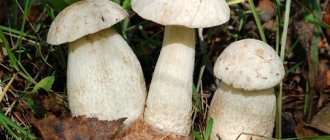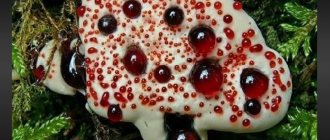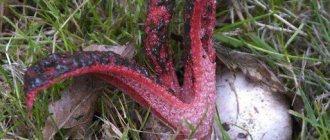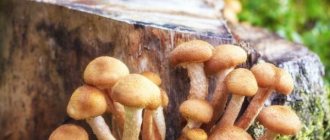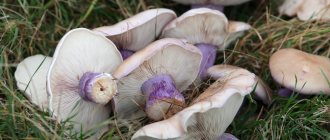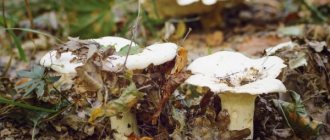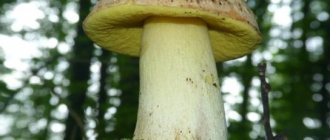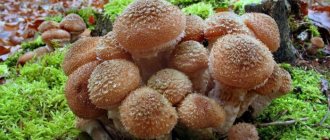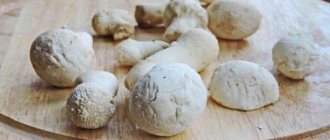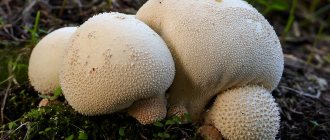Mushrooms are one of the most interesting edible things on Earth. This is a bold statement, but how many organisms do you know that are neither a plant nor an animal? Many interesting facts are known about mushrooms.
Mushrooms are really very interesting. In addition to their health benefits, they are great on pizza, salads, pasta and they serve as a garnish anywhere you put them. But there are also some mushrooms that can kill or create hallucinations. You may be wondering when did mushrooms originate? What are the consequences of eating poisonous mushrooms? How many types of mushrooms are there? What mushrooms glow?
We will try to tell you all this and much more. These are interesting facts that you didn’t know about our friends – mushrooms! There are many fantastic things that mushrooms hide.
kingdom of mushrooms
kingdom of mushrooms
In 1960, after many years of lengthy debate about what “mushrooms” actually were: plants or animals, the scientific community created a separate term - the kingdom of fungi . There was disagreement over the fact that mushrooms contain proteins, which are closer to animals, and carbohydrates and minerals, which are closer in content to plants.
Interesting facts about parasitic mushrooms and predators
The fact that the kingdoms of fungi and bacteria are the most ancient on earth is interesting in itself. There is a lot in common between them, but there are also significant differences.
In addition to poisonous and edible ones, there are also parasitic mushrooms that exist at the expense of other living organisms. They feed on plant juices and tissues, animals and insects, fellow fungi and lichens. Humans are no exception: fungal diseases of the skin, nails, etc. are known to everyone. Fungi, unlike bacteria that act internally, parasitize exclusively on the surface of living organisms.
A myriad of mushroom species
Types of mushrooms
Fungi are considered the most diverse living things on Earth. There are so many of them that for every species of known plants there are as many as 6 species of mushrooms. Even with the most approximate calculation, this means that there are about 2 million species of mushrooms on the planet. Only 100 thousand species have been reliably studied, and much fewer have been classified.
How old are mushrooms?/They are actually older than dinosaurs!!!
What age are the mushrooms
The teaching has already proven the fact that mushrooms existed 400 million years ago, which means only one thing - mushrooms existed long before dinosaurs appeared on Earth. They are one of the oldest inhabitants of our planet, along with ferns. But if the giant ferns that survived from the same period were significantly reduced, then the mushrooms, adapting, changed and it seems that all these species still exist today.
How to introduce children to mushrooms
Children's first acquaintance with mushroom dishes should occur at school age, since such food can harm the child's body. But it is possible and necessary to tell your child about unusual organisms on our planet.
Interesting crafts for preschoolers
You can introduce your child to mushrooms in a playful way. Kids always take part in making crafts with pleasure:
- Postcards. A sheet of A-4 format folded in half is an excellent blank for a future postcard. All that remains is to paint it with bright markers and pencils. You can decorate a “mushroom” card with the gifts of autumn – leaves, rowan berries, etc. Thus, the child will associate mushrooms with the autumn period.
- Applications. Crafts made from colored paper are ideal for studying the structure of the mushroom fruit. Let your child make all the parts colorful. This will make it easier for him to remember the names of the components.
- Plasticine figures. Mushrooms can be sculpted from plasticine - an additional activity for motor skills. It will be better if the baby first sculpts the individual parts of the mushroom, and then connects them together.
- Origami. The Japanese art of paper folding is also great. It will be difficult for a small child to make an independent figure, so it is advisable to use origami to create paper applications.
- Bulk crafts. It’s a great idea to make boletus from a mound of cereals. First, you should outline the contours of the future mushroom and apply a layer of glue to the entire drawing. The leg can be made from rice cereal, the cap from buckwheat, bulgur or the same rice, only brown.
- Papier-mâché technology. Cardboard egg trays soaked in water make excellent paper dough for crafts. First you need to sculpt a suitable figure, and then paint it with the appropriate colors.
- Fabric toys. You can also sew a mushroom. Felt or other similar materials are perfect for these purposes.
A child who has made a mushroom toy with his own hands will definitely remember all its features.
A short report for 2nd grade
Mushrooms represent a separate kingdom of living nature. They have similarities with plant and animal organisms at the same time. The science that studies mushrooms is called mycology, and scientists who work in this field are called mycologists.
The mushroom kingdom is very diverse. In nature, there are giant mushrooms that are several times larger than human height, as well as tiny fungi that can only be seen under a microscope. The shape and color of mushroom fruits are very variable.
In addition to the usual mushrooms with a cap and a stem, there are completely shapeless representatives of the kingdom, spreading across the tree bark. By the way, mold, which forms in damp conditions, is also a fungus.
There are edible and inedible mushrooms. Edible species include boletus, chanterelles, honey mushrooms, boletus, boletus, boletus, russula, milk mushrooms, champignons, oyster mushrooms and many other species. Fly agarics, toadstools and other poisonous varieties are considered inedible. Inedible mushrooms can cause serious poisoning, so you can’t not only eat them, but even taste them.
Mushrooms are very tenacious
Mushrooms survived Chernobyl
Their survival can be imagined by anyone who has ever encountered an infection caused by fungi or, for example, fought fungi in basements. Destroying fungus is not an easy task. Mushrooms, for example, survive at an altitude of 30 thousand. meters above the Earth's surface. They also withstand high radioactive radiation (mushrooms survived at the center of the Chernobyl accident) and even pressure of 8 atm. Fungi even live on the surface of sulfuric acid!!! These are the most survivable creatures.
Mushrooms grow at high speed
Mushroom "Veselka"
For example, the “Veselka” mushroom, which is included in the Guinness Book of Records as the record holder for growth speed. Every 2 minutes it grows by a centimeter! On the first day it looks like a grayish egg, on the second it becomes an umbrella on a high leg, and on the third it is no longer visible. In addition, this mushroom has unique beneficial properties. You can find out how to use it for the prevention and treatment of diseases here .
Interesting facts about mushrooms for children
In those places where mushrooms grow, tales are always told about them, stories and legends are composed. In the folk epic, mushrooms can be good or evil: they can reveal a buried treasure, or they can lead you into a swamp. But in real life there are such interesting facts about mushrooms that they sound no worse than any fairy tale for children and adults. For example:
- There are mushrooms that are taller than trees. Yes, yes, don't be surprised! This is exactly what everything looks like in the tundra. After all, the trees there are dwarf, no more than 20-25 cm, and the mushrooms tower above them. They grow very amicably, rushing to seize the short summer period. And deer eat the caps of tundra mushrooms with great pleasure.
Tundra mushroom
- About 140 species of mushrooms contain hallucinogenic substances that have narcotic properties. Most of them grow in South America. Ancient shamans used this property of mushrooms in their rituals, and the Vikings used them to give themselves fearlessness and strength before battle.
- There are about 30 species of mushrooms that glow in the dark. In our country, autumn honey fungus is widely known, growing on old rotten stumps. In the dark, their flickering resembles the movement of living creatures. In the old days, people were so afraid of them that in their fairy tales they populated the forest with witches and goblin. And in the Brazilian and Japanese forests, during the rainy season, green neon mushrooms grow, scattering their glowing spores around. This unusual phenomenon is called bioluminescence.
Glowing mushrooms
- The largest white mushroom was discovered in the USA in 1985. He had a girth of 2 meters and weighed 140 kg. And the weight of the largest American mycelium (with an area of 900 hectares) was about two hundred tons.
- The most expensive mushroom is the truffle. It is grown today not only in France, but also in other countries. The cost of mushrooms is 400-700 euros per 1 kg. A white truffle weighing 15 kg was sold at auction for 330 thousand dollars.
Truffle
- The only moving fungus, plasmodium (slime mold), is found in central Russia. This translucent gelatinous mushroom, similar to a jellyfish, does not even have a leg, but is able to move, albeit very slowly. Rolling from side to side, in a few days he can get to another place and even climb a stump or tree trunk.
Plasmodium
- Veselka vulgare, which is very common in Russia, grows the fastest of all mushrooms. The mushroom was included in the Guinness Book of Records. Every 2 minutes it grows by 1 cm. From a grayish egg it quickly turns into an umbrella on a long leg, but it does not live very long - only two days.
Veselka vulgaris
- The most exotic mushroom can be called dictyophora bell-shaped, or “Lady with a Veil,” living in the South American tropics. It, like a fungus, grows in just two hours, and then releases an openwork white blanket from under its cap. In the evening, the mushroom glows with a green mysterious light, and after a couple of days it disappears.
Dictyophora bell-shaped, or “Lady with a Veil”
So, today we looked into the most curious mushroom world. Its study is constantly ongoing, so there are probably many more amazing discoveries ahead.
Mushroom is the largest living creature that ever lived on Earth
The largest mushroom in the world
It’s hard to believe, but in 1985, one of the largest porcini mushrooms was found in America (Wisconsin). Its weight was 140 kg, and its coverage was 2 m. But, as you already understood, this is only the visible part of this creature. For example, in Oregon (USA) a mycelium was also found, covering an area of 900 hectares and weighing several hundred tons! But in Switzerland they discovered a mushroom about 1000 years old - honey fungus, measuring 800 by 500 meters. Its mycelium occupies 35 hectares of the Swiss National Park (Ofenpass).
Interesting facts about cap mushrooms
It would seem that what could be unusual about a cap mushroom? But in nature there are not only the usual white mushrooms, milk mushrooms and boletuses, but also mushrooms with very original shaped caps, for example:
- bright orange, similar to coral sprigs, horn mushroom;
- the latticewort is red, maturing from a white egg-shaped body into a bright red lattice ball;
- combed hedgehog, more reminiscent of algae than a mushroom.
Horned mushroom
There are quite a lot of similar flowering mushrooms that grow in tropical countries. There is a completely unique in shape Indian glass mushroom or a red mushroom from the island of Java, armed with tentacles. The nature of Australia is famous for its even more bizarre shapes and colors.
Hedgehog mushroom
One of the most unusual mushrooms in the world is the “Bloody Tooth” (Hydnellum Peca). A bright red liquid is released from it, very similar in appearance to drops of blood. The mushroom scares away people with its appearance, and animals with its bitter taste. You can meet the “Bloody Tooth” in the coniferous forests of Central Europe.
Bloody Tooth Mushroom
Among cap mushrooms there are their own record holders in size and weight: most often these are porcini mushrooms, champignons, puffballs, umbrellas, etc. Edible tinder mushrooms can reach very large sizes (up to 20 kg).
Mushrooms are predators and killers
Mushrooms are predators and killers
The diet of mushrooms includes nematode worms. The mushroom, like a spider, sets its traps in the form of rings of mycelium. When the worm touches this trap, it sticks tightly to it. Then the mushroom binds him with the threads of its mycelium and then there is no longer any chance of salvation. Fungal spores can germinate inside living things. But it’s one thing if a person gets sick from fungi, and quite another for small creatures. For example, a caterpillar will simply die from such an infection. But the fungus only develops from this.
But there are mushrooms that can even kill a person. One toadstool is enough to kill 4 people. For the same result, you will need several fly agaric mushrooms. Once upon a time, potent poisons were prepared from mushrooms, which were used to eliminate opponents. So, for example, the Emperor of Rome Claudius was poisoned by his own wife Agrippina, who prepared him toadstool soup.
Interesting facts about poisonous mushrooms
There are about 5,000 species of mushrooms growing in Europe, and almost 150 of them are considered poisonous. In fact, only fly agaric, toadstool and a few others are truly poisonous. But different cultures have their own ideas about mushrooms. The roots of this hostility probably lie deep in history. Many famous personalities once died from mushroom poisoning.
Red fly agaric
For example:
- the entire family of the famous Greek poet Euripides;
- Pope Clement VII;
- French king Charles IV and others.
The Roman Emperor Claudius, a great lover of mushrooms, was poisoned by his own wife Agrippina, who prepared him a dish richly flavored with pale toadstools. In those days, this was a very popular way to eliminate opponents.
Pale toadstools
Many poisonous and hallucinogenic mushrooms grow in the United States and African countries, and they are also found in Russia. Not being an experienced picker, you should behave very carefully in the forest. If the red fly agaric itself gives a warning signal with its bright cap, then the gray panther fly agaric is not so noticeable, but no less dangerous.
Gray panther fly agaric
Many poisonous mushrooms are skillfully disguised as edible ones:
- False honey mushrooms or thin mushrooms are very easy to confuse with edible mushrooms.
- The pungent russula is practically indistinguishable from the real thing.
- You can recognize that the poisonous olive omphalot is not a chanterelle only by smell.
The leaders in the presence of toxic substances with the possibility of fatal poisoning are, of course, the pale grebe and the fly agaric.
Mushrooms are healers
Mushrooms are healers
But besides the harm, mushrooms have been used as medicines since ancient times. Even now we take advantage of the healing properties of mushrooms - a drink to enhance immunity is made from “tea” or “milk” mushroom. In 1940, Flemming revolutionized the field of medicine by ushering in the era of antibiotics. He isolated penicillin (the first antibiotic) from yeast, which saved millions of people.
Champignons, purple rows, meadow and autumn honey mushrooms, milkweed, chaga and talkers also have medicinal properties. The skin of raincoats can be safely used instead of an adhesive plaster - its inner part is sterile and has bactericidal properties.
Sometimes fungi are called the third kingdom because they are neither plants nor animals, fungi occupy a special place between plants and animals.
2. In terms of their feeding method, mushrooms are more similar to animals. They do not have chlorophyll and are incapable of photosynthesis, but feed exclusively on ready-made organic matter.
3. Mushrooms, along with ferns, are the oldest inhabitants of the Earth, they are even older than the dinosaurs that they outlived. Mushrooms even survived the Chernobyl accident area.
4. Mushrooms are edible, inedible and poisonous. Rough estimates indicate the existence of two million species of mushrooms.
5. Scientists have studied only one hundred thousand of them, and classified even fewer.
Porcini
6. The white mushroom contains antitumor substances that kill Koch's bacillus. Also, eating it has a positive effect on the condition of the skin, hair and nails. It helps well in restoring the body after infections.
7. More than 300 million years ago, very tall specimens of mushrooms (about ten meters) grew on the planet. This was in what is now Saudi Arabia.
8. The oldest specimen is believed to be a mushroom discovered in a fossil in 1859. Its age is approximately 400 million years.
Autumn honey mushrooms
9. The science of mushrooms and their healing properties is called fungotherapy. This is a large medical trend that originated in ancient China.
10. Some Muslim countries prohibit the consumption of mushrooms. This is written in the Koran and is considered a sin.
Chanterelles
11. Chanterelles contain a unique substance that has an antiparasitic effect. Chittinmannose penetrates the parasite and causes paralysis of the nervous system. Moreover, the polysaccharide destroys massive clutches of worms. At the same time, it does not have the slightest toxic effect on human organs.
12. Chanterelle tincture is widely used as a medicine. It is used as an antitumor agent, to restore the pancreas and boost immunity.
13. In Italy they do not eat boletus. And in Germany, russula are considered poisonous.
Boletus
14. Among mushrooms there can be both male and female individuals, that is, mushrooms have sexual differences. This is indicated by the structure of their DNA and the similarity to human sex chromosomes. If the mushrooms have reached sexual maturity, they can produce joint offspring. True, not all mushrooms have such genes, which indicates that the mushroom kingdom also has its own evolving individuals, and it is not yet known what result such evolution will lead to.
15. The main body of the mushroom is the so-called mycelium, stretching for a huge distance underground, and what we see on the surface is just a fruit.
Death cap
16. The most poisonous specimens are the pale grebe and the panther fly agaric. Their toxic effects are not eliminated by any treatment.
17. The white toadstool can be easily confused with milk mushroom or russula, because the cap transforms at different stages of maturation. Mushroom pickers often confuse it with forest champignon.
18. In many countries, only champignons are eaten and wild mushrooms are not collected.
19. The majority of Russian residents eat mushrooms. About half of Russians are mushroom pickers and go out to pick mushrooms every year. Another 20% of the population purchases them in markets, and 16% in supermarkets and stores. And only 14% of the inhabitants of our country have never eaten mushrooms and do not intend to do so.
20. Mushrooms are valuable nutritious foods. They contain a lot of protein and relatively few carbohydrates. But they do not contain cholesterol at all. It is possible that precisely because mushrooms completely lack animal saturated fats, they are not classified as animals. However, in addition to protein and carbohydrates, mushrooms are also rich in antioxidants, niacin, potassium, selenium, vitamins D, B1 and B2.
Devil's cigar mushroom
21. Devil's cigar mushroom is a rare star-shaped specimen. It looks like a dark brown cigar-shaped capsule that opens to release spores. This action is accompanied by a characteristic whistling sound.
22. The healing properties of mushrooms are used in pharmacology. Since ancient times, mushrooms have been used as medicine. And even today, the so-called “milk” (also called “tea”) mushroom grows in many homes. A drink made from this mushroom helps fight inflammatory diseases and improves immunity.
23. In the 40th year of the twentieth century, A. Fleming isolated penicillin from yeast fungi, which opened the era of antibiotics.
24. In addition to these two mushrooms, talkers, chaga, milkweed, autumn and meadow mushrooms, purple rows and champignons have healing properties.
25. The plasmodium fungus, common in Russia, can move, albeit slowly, at a speed of about a centimeter per hour. It looks like a translucent piece of jelly.
Truffles
26. Truffles are the most expensive. They grow in the ground, and pigs often help people find them. Truffles are grown not only in France, but also in other countries. The price is 4-6 dollars per gram.
27. A white specimen of these mushrooms, weighing 15 kilograms, was put up for auction, where it was purchased for three hundred thousand dollars.
28. Veselka vulgaris, a common mushroom in Russia, is the fastest growing among mushrooms. They can grow an inch every few minutes.
29. The mycelium of some mushrooms glows. For example, autumn honey mushrooms growing on rotten stumps have this ability. At the same time, the mycelium penetrates the stump very densely.
30.On a moonless night you can see how rotten plants phosphoresce. This sight frightened the people remaining in the night forest before, and continues to frighten it now. It is very interesting that the mycelium flickers in a very unusual way, which resembles the movement of some living creatures. This effect is especially enhanced if you move your head.
Sulfur-yellow tinder fungus
31. The sulfur-yellow tinder fungus tastes like fried chicken. In some cities in America and Germany it is recognized as a delicacy. It also has strong healing properties.
32. Mushrooms have monstrous “punching” power. This strength is such that the mushroom can even penetrate marble. When it grows, its turgor pressure can reach seven atmospheres, which corresponds to the pressure in the tires of a ten-ton dump truck.
33. It is for this reason that it would seem that such a soft mushroom cap is capable of piercing not only concrete or asphalt, but also such hard surfaces as iron and marble. And even if the cap does not overcome the barrier, it will eventually be destroyed by the mycelium.
Fly agarics
34. Mushrooms can change people's state of consciousness. Some mushrooms contain substances that can cause hallucinations and a state of euphoria. This has been known to shamans and warriors of some nations since ancient times.
35.Shamans used this property of mushrooms to travel to other worlds and carry out psychotherapeutic work (it is known that with the help of psychedelics you can have a significant positive impact on a person), and by warriors to give themselves strength.
Sky blue mushrooms
36. Sky-blue specimens of mushrooms can be found in the forests of India and New Zealand in places with large concentrations of ferns or moss. They belong to the species Entoloma hochstetteri. They were opened quite recently—in 2002. They may be poisonous, but there is not enough data on this yet. They contain the pigment azulene, which gives them a distinctive blue tint.
37.Due to its unusual coloring, it was used as a symbol on the New Zealand $50 banknotes.
38. Mushrooms are found in fairy tales, legends, stories, dreams about them are interpreted by many dream books.
39. It is interesting that dream books state that a mushroom that a woman dreams of foretells her an imminent pregnancy. He warns men about the danger that can come from women.
40. The largest mushroom was found in the USA, it weighed about 140 kilograms, and the weight of the largest mycelium discovered was approximately two hundred tons.
Industrial mushroom cultivation in China
41. China grows almost two-thirds of the world's commercial mushrooms.
42. Mushrooms reproduce by spores. Many of them are so small that they are simply impossible to see. However, if you take an air sample, no matter in which room it is taken, fungal spores can be found in it.
43. Some mushrooms scatter their spores over long distances. By the way, such a familiar mushroom as the champignon is capable of releasing about 40 million spores, and the dung mushroom – up to 100 million!
44. However, the record holders in this regard are puffball mushrooms, capable of releasing over seven trillion spores. At the same time, they are thrown at a distance of over two meters, developing a speed of about 90 km/h. No sprinter runs that fast.
45. Mushrooms are eaten by wild animals (squirrels, foxes, wild boars, moose). They can be treated with them and stored for the winter. For example, the squirrel consumes about 45 species, preferring boletus and boletus.
Dung mushrooms or ink mushrooms
46. The dung mushroom was previously used to make ink. It has another unique feature - it causes poisoning only in people who are intoxicated. For everyone else, it remains absolutely harmless.
47. Mushrooms can grow higher than a tree. True, this only happens in the tundra, where, due to permafrost, trees cannot take deep roots and therefore grow as dwarfs 20-30 centimeters high, and even then bent to the ground. But the mushrooms grow the same as always, which allows them to rise above the tree crown.
48. It is noteworthy that they grow extremely quickly, managing to spread spores during the short polar summer. The appearance of such mushrooms is very spectacular, although most of all the people who enjoy the mushrooms are not the people, but the deer, who eat their caps with great pleasure.
49. If necessary, instead of an adhesive plaster, you can use the skin of a raincoat - its inner part is completely sterile and has bactericidal properties.
50. Porcini mushrooms grow in abundance in Switzerland. However, the local population does not collect or eat them.
photo from the Internet
Mushrooms are a source of many nutrients
Mushrooms are a source of nutrients
Mushrooms are a very important source of protein and also contain fewer carbohydrates and are completely cholesterol-free. And although mushrooms contain proteins that are closer to animals, since they do not contain animal saturated fats, they cannot be classified as animals. In addition to protein and carbohydrates, mushrooms are very rich in vitamins B1, B2, D, selenium, potassium, niacin and antioxidants.
Billions of fungal spores fly in the air
Billions of fungal spores fly in the air
As you know, mushrooms reproduce by spores. If you take a sample of the air in almost any room, you can find fungal spores. An ordinary champignon throws out up to 40 million spores, a dung mushroom - 100 million spores. But this is very little in comparison with the record holder of this category - the puffball mushroom, which releases more than 7 trillion spores!!! But that's not all. Spores are thrown over a distance of more than 2 meters, and their speed is as much as 90 km/h (25 m/s.)
Structure and characteristics of mushrooms
Did you know that the above-ground, visible part of the mushroom, which we usually collect and put in a basket, is only a fruit, also known as a reproductive organ. The real body is underground. It is called mycelium (or mycelium) and consists of many thin threads. At a certain point, the threads gather into balls, which increase in size and break through to the surface. The body of the mushroom itself does not live long, but the mycelium can exist for tens and hundreds of years, perfectly tolerating both drought and severe frosts.
Mycelium (or mycelium)
- The study of DNA revealed an interesting fact that some mushrooms are divided into male and female individuals. Having reached sexual maturity, mushrooms having such genes can produce common offspring.
- Mushrooms occupy a prominent place in the cuisine of most peoples. Being a rich source of easily digestible protein, they contain absolutely no fat or cholesterol. In addition, mushrooms are rich in vitamins and microelements that have a beneficial effect on the functioning of many systems of the human body. They remove toxins, stimulate metabolism, and some even inhibit the development of cancer.
Mushroom caps
- During the period of active growth, the pressure of the fungus reaches 7 atmospheres. The soft cap can penetrate not only concrete and asphalt, but also harder surfaces - for example, marble.
- The vitality and adaptability of mushrooms is amazing. They grow on plains and mountains, at altitudes of up to 30 thousand meters, in swamps and deserts. Both the Arctic and the sultry tropics can become their homeland. Even in the area of the Chernobyl nuclear power plant accident, mushrooms managed to survive.
- Although mushrooms are 90% water, they can also sunbathe: when exposed to the sun, they, like the human body, produce vitamin D. Therefore, the stronger the concentration of sunlight, the darker the mushroom cap will be.
Mushrooms are natural recyclers
- Fungi are natural recyclers of dead plants. In just a few months they can turn a tree into soil. If it were not for mushrooms, there would be much more garbage on the planet.
- Reproducing by tiny spores, mushrooms release them into the air in huge quantities. For example, a champignon throws out up to 40 million spores, a dung mushroom - up to 100 million.
The record holder for reproduction is the raincoat. It throws more than 7 trillion spores over a distance of 2 meters, at a speed of about 90 km/h.
The mushroom has supernatural powers
Fungi destroy concrete
During the period of mushroom growth, the pressure reaches 7 atmospheres, which is equal to the pressure in the tires of a dump truck. Therefore, at first glance, a soft mushroom cap can easily break through even marble and iron. If the cap does not pass, then the mycelium will surely gradually destroy the barrier.
Mushroom propagation
Fungi reproduce asexually:
- Specialized cells - spores;
- vegetatively - parts of the mycelium, budding.
The process of sporulation may be preceded by the sexual process, which is very diverse in fungi. A zygote can be formed as a result of the fusion of somatic cells specialized for gametes and germ cells - gametes (formed in the genital organs - gametangia). The resulting zygote germinates immediately or after a period of dormancy and gives rise to hyphae with sexual sporulation organs, in which spores are formed.
Spores of various fungi are spread by insects, various animals, humans and air currents.
Mushroom propagation
Mushroom height
The height of mushrooms in the tundra
For example, in the tundra mushrooms grow that are taller than trees, since the latter in this region are dwarf (20-25 cm), and mushrooms are standard and rise above the tree crowns. Another interesting fact is that they grow almost simultaneously, as they rush to release spores during the short summer. Most of all, these mushrooms are enjoyed by deer, who happily eat their caps.
Poems about mushrooms
Like riddles, poems about mushrooms for children are an accessible encyclopedia of nature in rhyme and poetic lines that are easy to learn and remain in memory for a long time.
* * *
Golden foxes - Curious sisters. They wear red berets, they bring autumn to the forest in summer.
* * *
The hats will shine like oil. Their paws will not hide them. Guys will come to the forest in a crowd and collect boletus mushrooms.
* * *
He put on a red hat and sat down under an aspen tree. The boletus fungus has been sitting there for the second day. The fly found out about him and immediately buzzed nearby. She has a larva in her paws. And the squirrel has a basket. The squirrel did not pass by, the Boletus saved. The aspen boletus is edible, but it will fit in her pie.
* * *
People have known for a long time what a fly agaric is. Attractive in appearance It is actually poisonous Like the toadstool Or the satanic mushroom, Fresh and their remains. Their poison is comparable to that of fish, poisonous spiders, and snakes. My dear children, it is very important to listen to adults and not to eat bad mushrooms!
* * *
Oak trees grow on the mountain, Mushrooms grow under the mountain: White is old, he didn’t take it, Moss mushroom is small and lethargic.
The breast warms the side in the sun. Go to the box, fungus!
* * *
The boletus, the boletus, deftly hid under the birch tree. Don't hide so diligently - I will definitely find you
* * *
This mushroom grows in greenhouses, In wet beds in peat bogs, The hat is a white chignon This is definitely a champignon.
Mushrooms glow at night
Glowing mushrooms
Some mushrooms have luminous mycelium. For example, autumn honey fungus growing on rotten stumps. In this case, the mycelium densely permeates the entire stump. And at night you can see the stump glow. This sight used to frighten people very much, who believed that witches and goblin lived in the forest. It is also interesting that the flickering of these lights resembles the movement of living beings, as it changes with every turn of the head.
